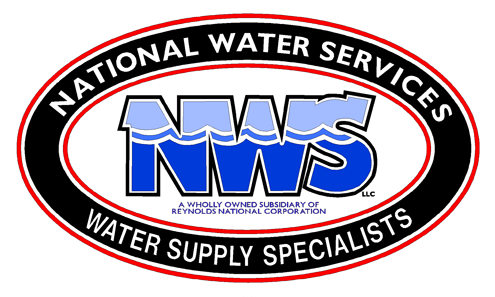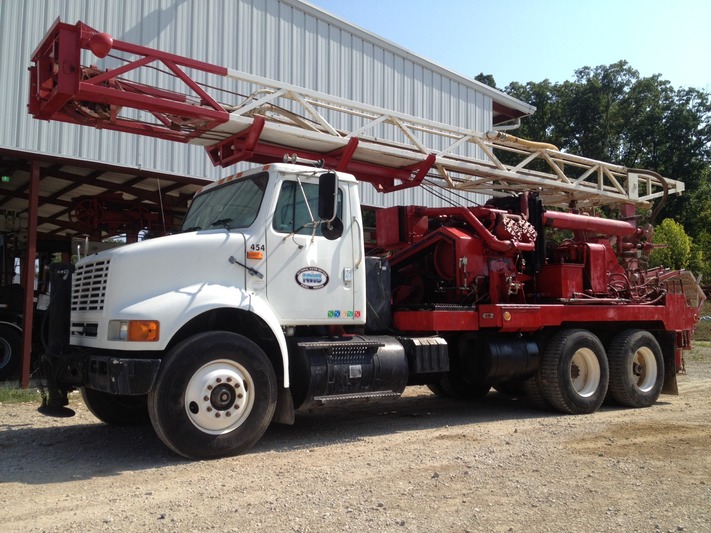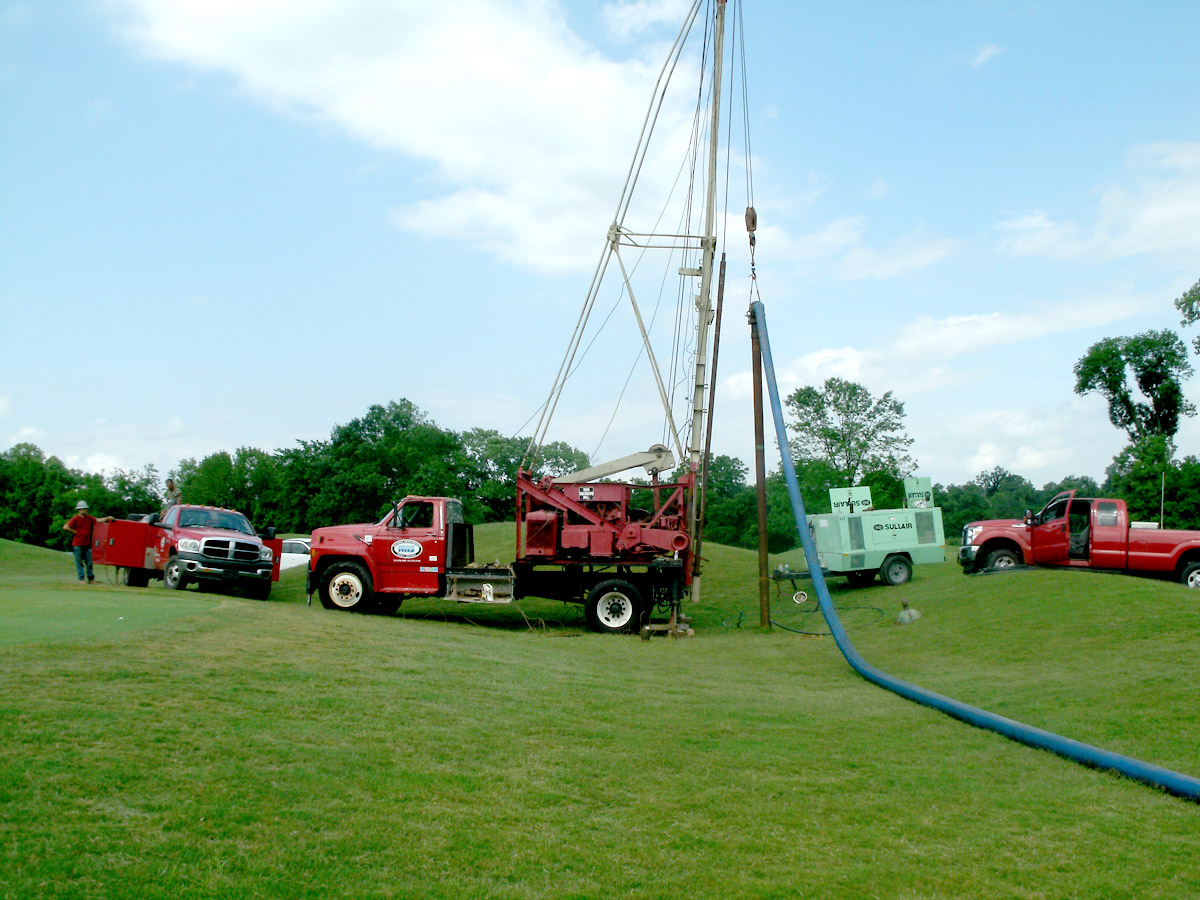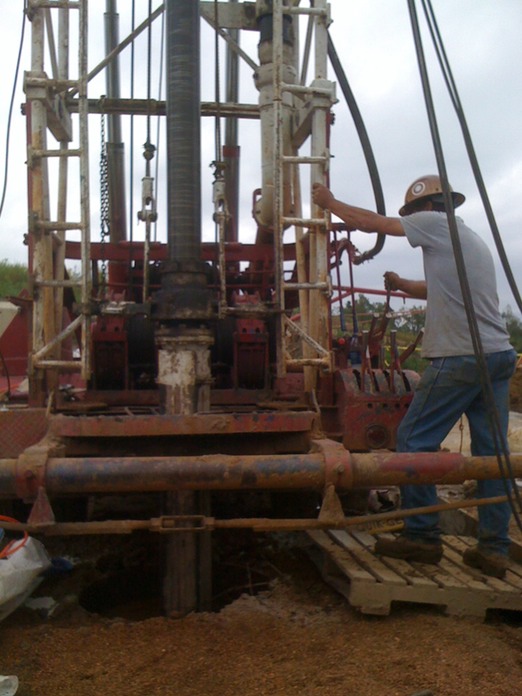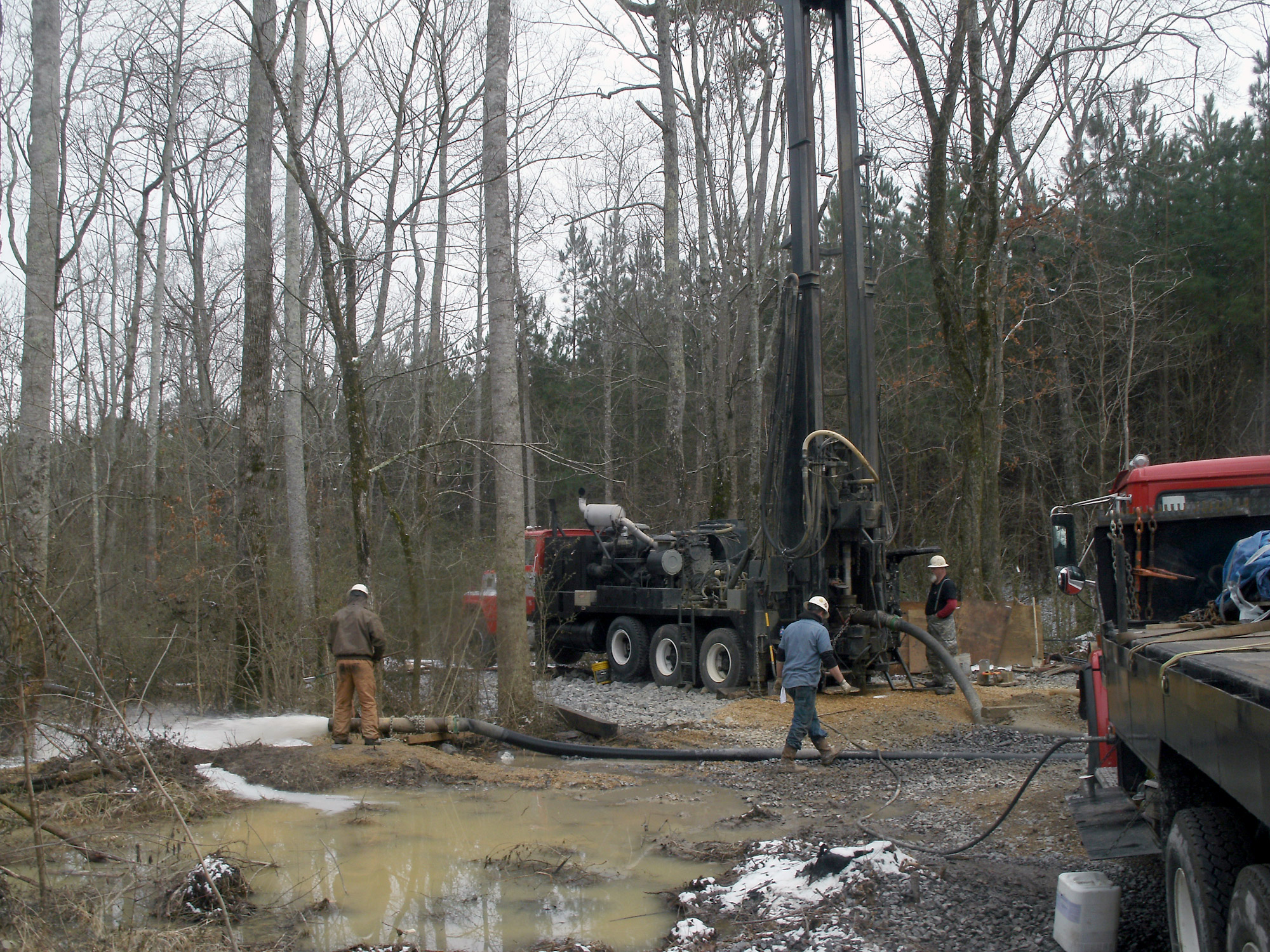Four drilling techniques can be deployed depending on many factors.
Correlation of data gathered from the hydrogeologic investigation, test boring, water quality analysis and aquifer evaluation enables specific site selection for permanent production wells. Then drilling begins.
Direct Rotary
Direct rotary consists of drilling a borehole by means of a rotating bit and removing the cuttings by continuously circulating a drilling fluid. Both a bit and the drilling fluid purpose of the well the time required to complete a drilled well is usually slight in comparison to other methods. Air rotary drilling is often utilized in hard rock drilling. The air rotary equipment provides an estimation of the amount of water a well may produce. Mud rotary drilling equipment is often used in unconsolidated sediments. The drilling fluid stabilizes the formation, while drilling removes the cuttings from the bottom of the hole.
Cable Tool Rig
Ever since the early days of water well drilling, the percussion drilling rig has played a central role. This is an all-purpose machine that can be used to penetrate sand, gravel, or hard rocks such as sandstone or limestone. Depending upon the geologic formation, this method of drilling is traditionally very slow.
Reverse Circulation
Large diameter production wells in sand and gravel can be rapidly drilled by the reverse circulation process. In this method, the flow of drilling is reversed as compared to the conventional rotary methods. The drilling fluid used is not as heavy, lessening the problem of formation clogging. This makes well development easier and less costly. Wells up to 72 inches can be drilled by using reverse circulation.
Dual Rotary
The dual rotary technique is presently being used successfully where unconsolidated formations (sand, gravel, and boulders) make it difficult to drill a cased hole using conventional drilling techniques. During the past few years, Barber Industries has introduced new design features into its DR rig (Dual Rotary rig) and perfected the dual rotary concept for use in the water well and construction industries worldwide. DR rigs are presently operating very successfully in Africa, Australia, Canada, Europe, Mexico, Korea, Taiwan, South America and U.S.A. The DR rig utilizes a lower rotary drive unit to advance casing through unconsolidated overburden. Rotational forces are effectively transmitted to the casing through power operated jaws. A patented carbide studded shoe, welded to the bottom casing joint enables the casing to cut its way through the overburden. Casing can be simply rotated and pulled back out of the hole to set screens, full-length plastic liners or salvage casing from abandonments. A top drive rotary head simultaneously handles a drill string equipped with a down-the-hole hammer, drag bit or rolling cone rock bit to drill inside or ahead through the casing. The lower rotary drive unit operates totally independently from the top drive rotary head. When the casing is advanced ahead of the bit or air hammer, cross contamination is minimized and borehole stability problems associated with artesian conditions are eliminated. Using this drilling technique the DR rig has successfully operated in locations where casing hammers and reamers have been unsuccessful.
The versatility of this unique drilling rig makes it one of the most efficient and cost effective methods for drilling holes in difficult formations.
